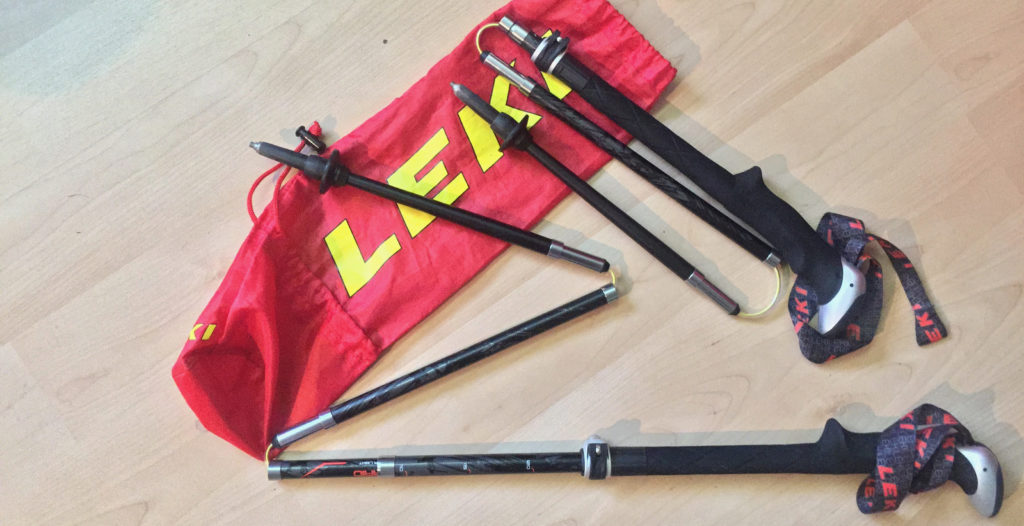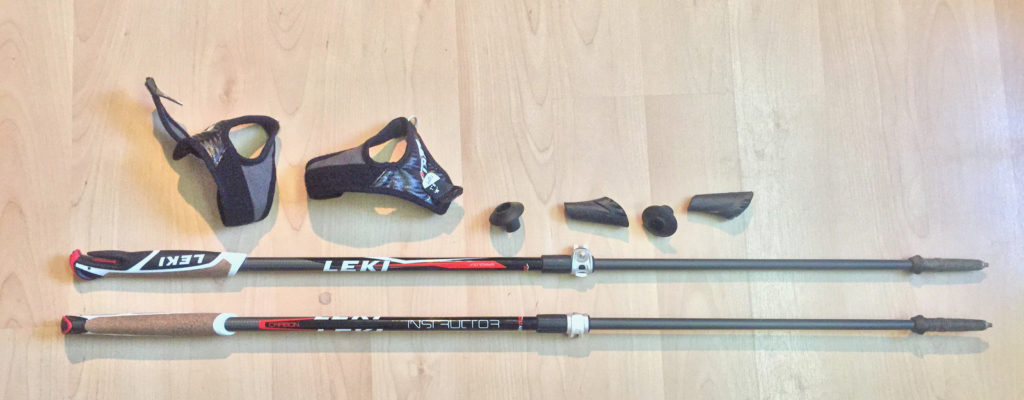What is the purpose of my relentless scouting activities? First of all my funds are not endless (they are actually rather limited). Therefore I like to spend wisely and I can’t afford to test everything and everywhere.
For a gear company these activities can be beneficial in many ways. Usually, before constructing prototypes, a company should have a market overview. Otherwise, they risk to produce inferior products and sales of these products will never ever become great.
Example: Exped, a Swiss company, produces a huge number of different sleeping pads. Unfortunately not one of them can match the NeoAir from Thermarest, a brand of Cascade Designs. In the German language there is the expression for this: “like lead in the shelf”. Just to be fair: Exped mats are well designed and durable but NeoAir remains the standard, everybody else is benchmarked on.
There are companies who produce cheaper mats and get the customers who can’t afford to spend more than 150 $ on a sleeping mat. Or those who will use their mat for two nights and then get rid of it. While every outdoor company claims to be as sustainable as possible, the production of inferior products for the outdoors is at least questionable. In Switzerland tents are available for extremely cheap prices – 30 $ or less. People use to go to music festivals in the summer and simply let their tents stand there once the festival is over. Some festivals try to recycle these tents by giving them to refugees in other parts of the world. They also started to register the tent owners in order to make sure that they take their tent with them, once the festival is over.
Sources for scouting
Social media is a powerful tool. For my research I use Youtube, Instagram and personal blogs (for example this one) besides the pages of all the companies. Lots of long distance hikers vlog their hikes and sometimes they try to monetize it. Gofundme pages are common, some have patreon accounts. Sometimes more than one person is involved. The hiker simply collects raw material and sends it to a friend with editing infrastructure. As blogging and vlogging is time consuming, daily updated blogs from the trails are rare.
Personally, I think that thru-hiking is the FIA WEC of hiking. Things that pass the test of long-distance hiking are likely to satisfy the common overnight hiker or people who do a short tour of just some hours.
With exceptions: While the Altra Lone Peak shoes have a fabulous reputation under thru-hikers, they may not be suitable for day hikers. The Lone Peaks offer no support at all, something people, who are used to do the stability by themselves, love. There is nothing on this shoe that can generate pressure after 10 hours of walking. Less trained people may roll their ankle.
The knowledge usually builds itself with the miles. A lot of people do little or no research in the beginning of their hikes. They start with cheaper and heavy equipment. During their hike they learn that lightweight does not mean expensive and that waterproof boots are heavy, you sweat in them and you get blisters. Their toe box may be horribly small. Often people do gear reviews. If they have already done several thru-hikes, their reviews get more precise and they can add real life experience.
Let’s think about trekking poles
Trekking poles are interesting, because regardless of the intended usage, you search for the same product characteristics. No matter whether you do nordic walking, trekking or trail running, you always want the lightest yet strongest poles. Variants exist in terms of storage and transport, when not in use.
So called z-poles are held together by a strong yet lightweight cable on the inside. When in transport mode, they can be folded down. This construction method has one disadvantage: The joint pieces have to be extremely sturdy so they are made out of aluminum, even if the rest of the pole is made out of carbon fibre. Carbon fibre has a problem with loads on edges. Z-Poles tend to vibrate if the ground is rocky. Day-hikers prefer this kind of poles, because they can be folded down to a short length and fit inside your pack. The possibility to store away the poles comes also in handy on rough hiking trips where you have to do rock climbing.
Then there are telescopic poles. In the early days, they were locked by an expanding mechanism on the inside. This mechanism was activated by a screw. Under vibrations ordinary screws tend to loosen themselves. Regardless how hard you tighten your poles, after some hours of hiking you had to retighten them. Meanwhile the industry has found a better solution: Leki calls it Speed Look 2, Black Diamond Flick Lock Pro. Telescopic poles are sturdier than z-poles but they are longer when not in use since they can’t be folded down.
There are fixed length poles, mostly used by nordic walkers or hardcore trail runners within competition settings. To travel with them is impractical, unless you have your nordic skis with you anyways – in winter for cross country skiing, everybody uses fixed lengths.
In long-distance hiking they are not existing. People tend to have tents, who use the poles as replacement for the tent poles. The most popular is the Duplex from Zpacks. It makes sense: Why carrying separate tent poles if you use poles anyway? However, to use the trekking poles as tent poles you need to adjust them in height. Telescopic poles can also be frankensteined – hikers on a budget tent to do it along the long trails.
There are a lot of brand manufacturers: Leki, Black Diamond, Komperdell, Gossamer Gear, Fizan and Raidlight from France (and more). Jeff Garmire, who hiked the calendar triple crown in 2016, used poles from the manufacturer Mountainsmith in the US. Skiing poles are made from a number of additional manufacturers such as K2.
Of course there are off-brand manufacturers, at Wallmart you can get poles for 16 $. Also REI has their own REI co-op brand. The major market for branded poles is divided between Black Diamond, Leki and Komperdell (own assumption). Earlier, Exped manufactured also their own poles and they were apparently not even that bad.
Long distance hikers seem to prefer cork grips. These grips remain grippy even if you sweat a lot day in and day out. Foam grips tend to color your hands black because there is abrasion through sweat. Cork is a natural product and it is gained in a sustainable way. World market leader for cork is Portugal.
Manufacturers also offer suspension in poles. Leki claims that it reduces the impacts by 40 % but it adds weight and you use energy to compress the suspension.
While Black Diamond and Leki produce an impressive number of different poles, other manufacturers produce interesting offers for niche markets. Gossamer Gear produces in Austin Texas, their carbon fibre poles are handmade. And they are lightweight. Probably the lightest adjustable poles on the market. For 2017 Gossamer Gear offers more variants, including a fixed length. The handle of the Gossamer poles is a sculptured piece of resin and cork, the wrist strap is rather primitive and they still use the screw system for length adjustment.
Leki is not a niche producer but they have an interesting strap system, called trigger shark. It is adapted from their cross country skiing offerings and enables you to detach your hands from the pole by the push of a trigger. This works one handed and you can attach your hands by a natural movement. No longer will you have to stop in front of difficult passages to make sure, your hands are strapped properly to the poles. They use it also in alpine skiing where it serves to improve security.
Many long-distance hikers eat and walk at the same time because they need to take on 5000 to 6000 calories per day. A system like trigger shark makes this process much easier. If you walk for ten or more hours you do this easily 20 times a day. Not to mention the possibility of taking pictures or filming while you hike.
Telescopic poles exist in two or three element configurations. A two element configuration allows for height adjustment but has a longer minimal height than a three element set up. Because there is only one buckle, a 2 element pole should be lighter. Lekis two element nordic walking poles allow an adjustment up to 125 cm which is on the shorter side.
For long hikes, the telescopic poles hit the sweet spot between weight, sturdiness and adjustability. From Leki, there is one product with the trigger shark system: The “Traveller carbon”. It is adjustable from 62 to 130 cm whereas the one buckle model “Instructor” is only adjustable from 100 to 125 cm. The “Instructor” weighs 171 g, the “Traveller Carbon” 187 g. Leki also offers matching gloves for the trigger shark system.
As of today (July 2017) I think the Traveller Carbon is one of the best poles on the market. Leki has also dedicated trekking poles with trigger shark, but they are heavy. I have done more than 100 miles with the Traveller Carbon and they still work as intended. I use them to catch my weight all the time.
New combinations
If you combine parts of the offerings of several manufacturers you come to an unbeatable product. No one should just copy other manufacturers if they don’t want to see the results leaving towards lawyers and later to a competitor as a compensation for patent violations. What can be done however, is to improve the elements from other manufacturers. Lekis wrist strap for example is not fully patent protected. Exel from Finland produces poles with a similar strap (fixed length only). Also Komperdell has a similar offering within their nordic walking poles.
Conclusion
Companies should know, what the market demands but also what already exists on the market. Otherwise they risk to produce average products for segments with no demand.
- Take the drone market: GoPros Karma drone was caught off guard by DJI with their Mavic drone. In early summer 2017 DJI released the Spark, another nail in the coffin of the Karma. It makes no sense to fly with a handle for the human hand because it is too big – everything else must then be designed to accommodate this handle.
- Exped released a new tent for the year 2017, the Orion. In Europe they claim that it is ultralight. It weighs 2.3 kilos. On the english site for the US, there is not one single word about the tent being ultralight or even lightweight. It costs 670 $ in the US. The standard offering in the two wall tent market for two persons, the Big Agnes Copper Spur II, weighs 1 kg or two pounds less and is more than 200 $ cheaper.
Product scouting and research within a group of long time users, supported by research with tools like Nielsen, can help to plan for a solution that answers demands, is unique and has superior characteristics when compared to the products of the competition. As this happens in the planning phase, no expensive time and materials are wasted in the production of prototypes.
Starting from already existing solutions can help to cut engineering costs as there are standard solutions for aspects, no one needs to re-engineer from zero. New combinations of (improved) standard solutions should allow for a superior overall design.
Please note: This post handles only technical aspects of outdoor products. It is not about production methods, working conditions and environmental protection. However, I believe that it is easier to convince a customer to pay more for a technical superior design that is created under fair conditions then to sell an inferior product because it is manufactured under fair conditions.

